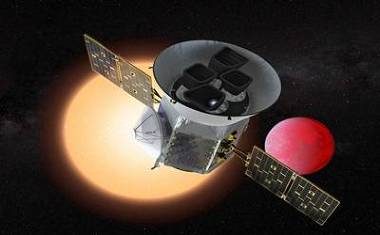NASA’s New Horizons spacecraft has detected its next flyby target, which is an icy world a billion kilometres previous Pluto, from greater than 160 million kilometres away and over 4 months forward of its New Yr’s 2019 shut encounter.
The New Horizons probe, which flew previous Pluto in 2015, is ready to come across the Kuiper Belt object, known as 2014 MU69 — nicknamed Ultima Thule — on New Yr’s Eve and New Yr’s Day, 2019.
Found in 2014, the article MU69 is greater than 6.5 billion km from Earth.
On August 16, Information Horizons’ Lengthy Vary Reconnaissance Imager (LORRI), took a set of 48 photos, from 172 million kms, 64 billion kms from the Solar and in opposition to a dense background of stars.
The picture subject is extraordinarily rich with background stars, which makes it troublesome to detect faint objects, Hal Weaver, New Horizons mission scientist from the Johns Hopkins Utilized Physics Laboratory in Maryland, US, mentioned in a press release.
It truly is like finding a needle in a haystack. In these first photos, Ultima seems only as a bump on the facet of a background star that’s roughly 17 instances brighter, however, Ultima will likely be getting brighter and simpler to see because the spacecraft gets nearer.
This marked the group’s first try to find Ultima with the spacecraft’s own cameras and that the object may be very near the place scientists predicted.
The observations of Ultima over the next 4 months will assist the New Horizons group to refine the spacecraft’s course towards the closest strategy to Ultima, at 12:33 a.m. EST on January 1, 2019.
The Ultima flyby would be the first-ever close-up exploration of a small Kuiper Belt object and the farthest exploration of any planetary physique in history, shattering the report New Horizons itself set at Pluto in July 2015 by about 16 billion kms, NASA mentioned.
We now have Ultima in our sights from a lot farther out than as soon as thought doable. We’re on Ultima’s doorstep, and a tremendous exploration awaits! said New Horizons Principal Investigator Alan Stern, from the Southwest Research Institute in Boulder, Colorado.













